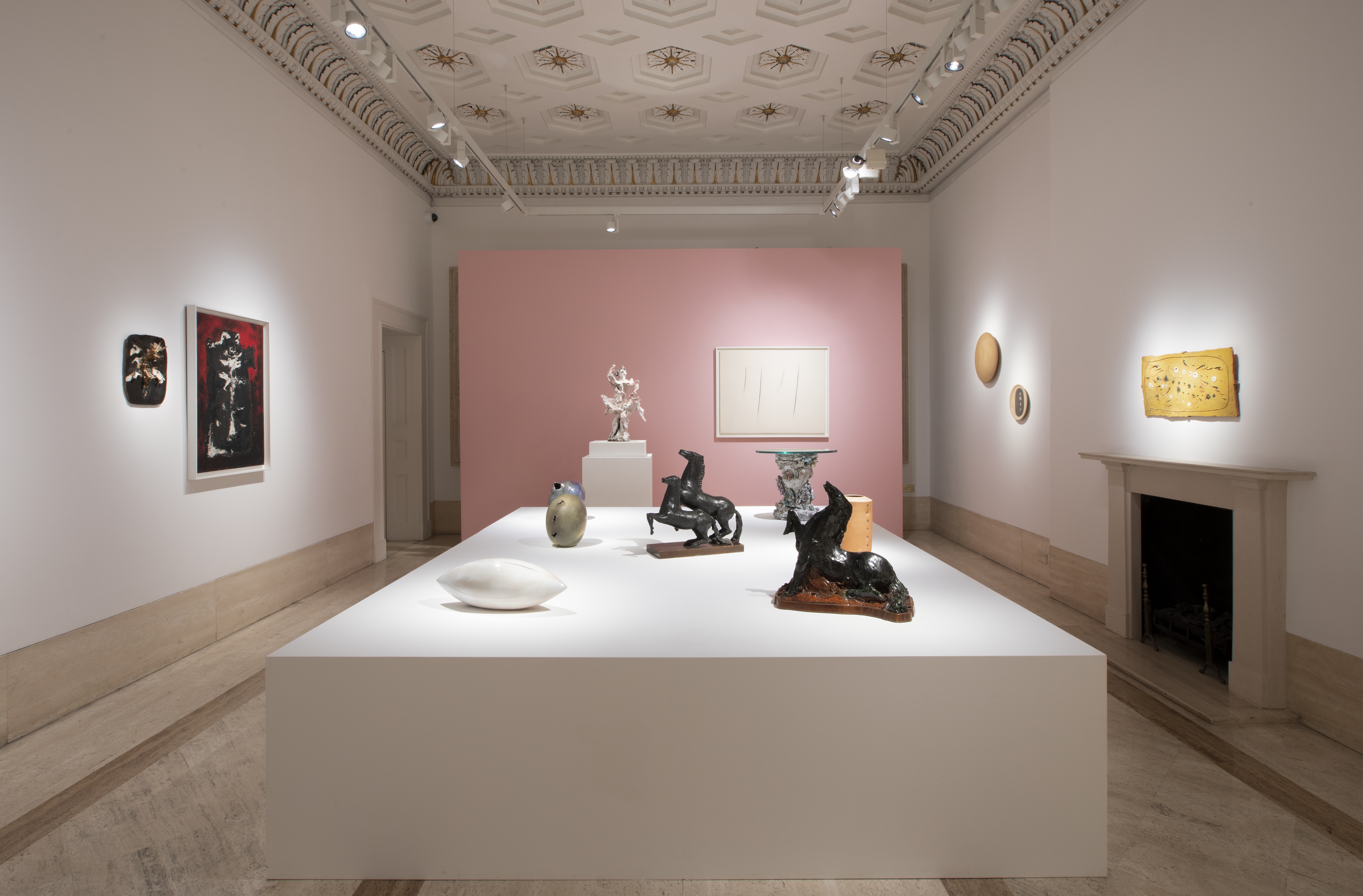

The founder of Spatialism, Lucio Fontana is a defining figure in postwar Italian abstraction. Born in Argentina, Fontana moved to Milan as a child together with his family in 1905. He initially trained as a sculptor with his father, who specialised in funerary monuments, and later studied at the Accademia de Brera, holding his first solo exhibition at the Galleria Il Milione in Milan in 1930. Fontana returned to Argentina in 1940, and in 1946 published his Manifiesto blanco, an introduction to the precepts of Spazialismo (Spatialism), which he followed up with his Primo manifesto dello spazialismo (First manifesto of spatialism) upon his return to Milan in the following year.
By the end of the decade, Fontana was producing his revolutionary perforated canvases, a series he would continue to develop for the rest of his career. Each Concetto spaziale (spatial concept) typically featured a monochrome surface punctured with buchi (holes) to open up a new pictorial dimension. By the end of the 1950s, Fontana was slashing his canvases with his now-signature tagli (cuts), applying black fabric to the reverse of his canvases to enhance the sense of depth. He also created three-dimensional sculptural versions of his Concetto Spaziale, incising perforations into organic materials such as chalk or wax, and even casting them in bronze. Toward the end of his career Fontana, experimented with spatial environments, mounting neon lights in blackened rooms. For a series of cool and meditative white tagli installed like altarpieces in a monumental chapel, Fontana was awarded the International Grand Prize for Painting at the 1966 Venice Biennale.